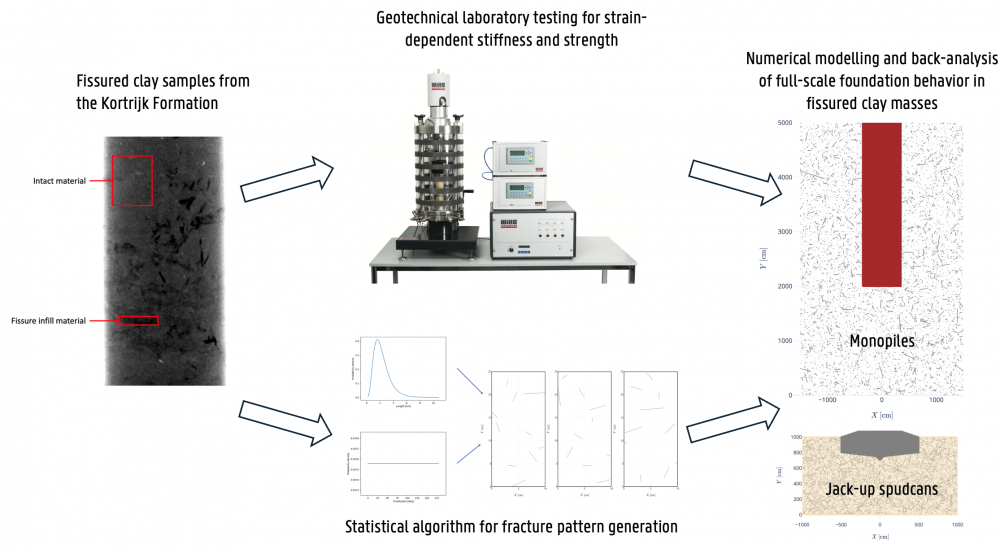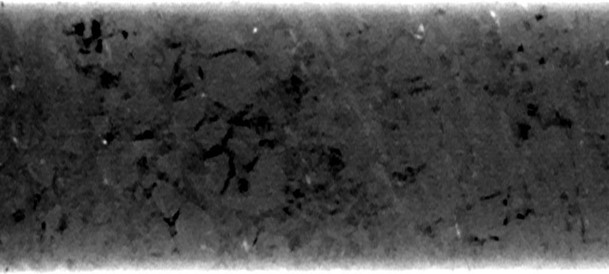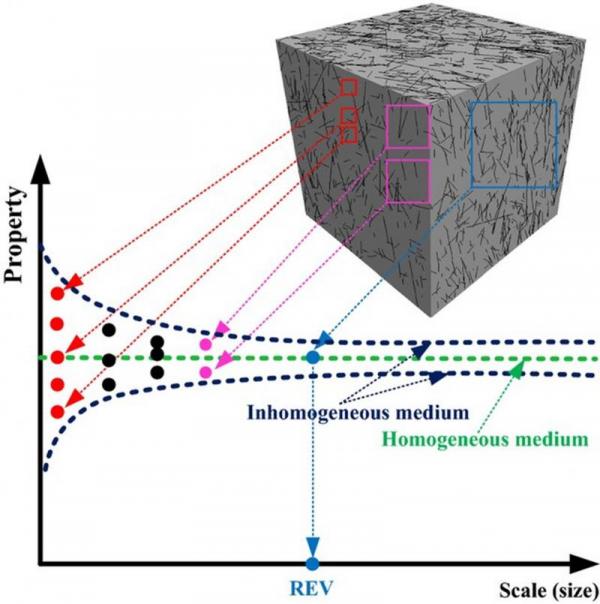Summary
FISSCK = Fundamental Investigation into the strength and stiffness of clays of the Kortrijk Formation
In the Princess Elisabeth Zone (PEZ), stiff clays of the Kortrijk formation are extensively encountered. This material presents challenges to geotechnical characterisation and modelling due to the presence of fractures (polygonal faulting) in the soil occurring both on multiple scales. A research proposal is formulated which combines lessons learnt from the ETF WINDSOIL project and insights from the ongoing VLAIO CLAYTECTONICS project. The project aims at accurate site characterisation for the stiff clays of the formation of Kortrijk in which polygonal faulting is extensively observed.

Problem Statement
Polygonal faulting is geologically described for over 100 geological provinces worldwide and shows faults which can be several meters long. However, the internal structure of stiff clay samples taken for the CLAYTECTONICS project also shows a blocky appearance due to fissures interacting with each other on the centimeter to millimeter scale. The presence of faults and fissures (as shown in Figure 1) influences the mass strength of the clay and standard laboratory testing for strength and stiffness typically can be significantly affected by the presence of weakness planes in the sample.

Figure 1: X-ray image of a heavily fissured clay sample of the Kortrijk formation.
The strength and stiffness of the soil is generally derived from relatively small samples in which fissures or fractures may or may not be present. This can have a pronounced influence on the measured properties as shown in Figure 2. Due to their large size, foundation piles and jack-up spudcans will affect a larger volume of soil and the mass strength and stiffness for such a representative elementary volume of soil needs to be quantified. Testing sufficiently large soil samples in the laboratory is not practically feasible so alternative solutions need to be sought.

Figure 2: Concept of representative elementary volume (REV). Small samples show a large variability in strength and stiffness and this effect reduces with increasing sample size (Wang & Cai, 2020)
For the design, installation planning and in-service monitoring of offshore wind turbine structures and installation vessels, the mass strength and stiffness of the subsoil needs to be known with greater accuracy than is currently the case. The digital twin models that have been developed within the WINDSOIL ETF project rely on an accurate characterisation of the pile-soil interaction and this is currently a knowledge gap that needs to be addressed. Moreover, the soil strengths which are an input to jack-up leg penetration analysis need to be selected with the concept of the REV in mind.
ETF FISSCK aims to address the shortcomings of the current methods for characterising the mass strength and stiffness of the clay soils from the Kortrijk formation. These conclusions have potential applicability to all basins with polygonal faulting occurring worldwide.
Project partners

Industrial Advisory Board

Work Packages
A number of work packages have been formulated which are centred around a research question. A summary of the work packages is given below.
- WP 1: Geological characterisation of the clays of the Kortrijk formation (UGent RCMG, VLIZ)
- Research question WP 1: What is the geological origin of fissures and faults in the clays of the Kortrijk formation?
- Summary of work: The geological origins of the fissures in the Kortrijk formation will be characterized by performing field observations on the clay pits in West Flanders. A dedicated onshore sampling campaign and in-situ testing campaign will be performed onshore at locations with known stiff clay deposits to ensure sample material is available for geological and geotechnical laboratory testing. X-ray or CT-scanning will be used to visualize the fissuring patterns in the clay.
- WP 2: Laboratory investigation of strength and stiffness of intact clay (UGent Labo Geotechniek)
- Research question WP 2: What is the (anisotropic) strength and stiffness of the clays of the Kortrijk formation for stress conditions which are relevant for offshore foundations?
- Summary of work: Two new laboratory test setups; an advanced triaxial cell with bender elements and local strain measurements and a resonant column device will be purchased and commissioned. With this equipment, intact portions of undisturbed samples and reconstituted samples will be tested to characterize the properties of the intact clay material and the fracture infill material respectively. Testing on samples with known fissure patterns will also be performed to benchmark the models developed in WP3. The strength testing will be performed with the triaxial test apparatus and the stiffness testing with the resonant column device.
- WP 3: Distinct element modelling of stiff clay masses (UGent Labo Geotechniek)
- Research question WP 3: Can we create a model which describes the mass strength of stiff clay soils by modelling intact material and discontinuities in a distinct element software?
- Summary of work: Based on the test results from WP2, constitutive parameters for drained and undrained analysis of the intact material and fracture infill material will be calibrated. An stochastic algorithm for creating geometries of fissured soil masses will be set up based on similar work performed for rock mass modelling. With this algorithm, the fissuring patterns from the X-ray or CT-scans will be reproduced. The geometry of the fractures and the constitutive properties will be implemented in a PLAXIS 3D model of the fissured soil mass.
- WP 4: Guidelines for parameter selection from in-situ tests (UGent Labo Geotechniek, UGent RCMG)
- Research question WP 4: How can mass strength and stiffness be derived from in-situ tests results?
- Summary of work: The observations from the surveys and results from numerical modelling of mass strength and stiffness will result in a set of guidelines which can be used for characterization of fissured clay deposits worldwide. The need for sample scanning and testing of larger samples will be assessed and recommendations will be formulated.
- WP 5: Monopile design implications (UGent Labo Geotechniek, VUB)
- Research question WP 5: What are the implications of mass strength and stiffness of the stiff clays in the Princess Elisabeth Zone for a digital twin of an offshore wind turbine structure?
- Summary of work: The digital twins developed in the SOILTWIN and WINDSOIL projects has been successfully used to back-analyse the bending moment distribution and natural frequencies for monopile foundations. The fissured clay presents challenges because of its fissured nature. The models developed in WP3 will be used to perform 3D analysis of monopiles in a fissured soil mass. This will allow the strain dependent soil-structure interaction to be quantified and to then used this in a digital twin model. The soil-structure interaction modelling can be validated with full-scale monitoring data. To ensure that fit-for-purpose data is available for future monopile foundations at PEZ, a monitoring concept will be developed.
- WP 6: Jack-up leg penetration and stability implications (UGent Labo Geotechniek with data provided by JDN and DEME)
- Research question WP 6: What are the implications of mass strength and stiffness of the stiff clays for the parameter selection in jack-up leg penetration assessments?
- Summary of work: Jack-up spudcans mobilize a large volume of soil and as such, mass strength and stiffness of the material will be observable from the jack-up leg penetration response. Block formation from fissured clays was already observed from offshore records (Raymackers et al. , 2017). The numerical 3D model of a fissured soil mass will be used to back-analyze jack-up leg penetration cases provided by two Belgian contractor operating jack-up vessels. The ability of the models to capture the mass strength of the material will be verified. A benchmarked material model of the soil mass can be useful for future installation planning.
Project Basics
- Number of Partners: 3
- Coordinator: Ghent University
- Start Date: 01/10/2024
- Duration: 3 Years
- Budget: 2.197.881 euro (of which funded: 1.738.916)
- Funded by FPS Economy



